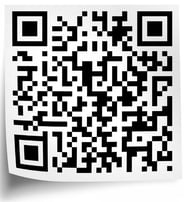What is Print Advertising?
Print advertising is a powerful and time-tested marketing strategy that allows businesses to market their brand or products in a specific way. It remains a valuable component of marketing strategies, especially when aiming to establish a lasting connection with a specific audience. If you're considering incorporating print advertising into your next campaign, it's important to evaluate all aspects. Let's dive into the world of print advertising, explore the various types to consider, and weigh the pros and cons.
Understanding print advertising
Print advertising is a form of marketing that refers to the use of printed media, such as newspapers, magazines, brochures, posters, and other physical forms of communication, for the purpose of promoting a product, service, or brand. This form of advertising has been a traditional and widely used method to reach a target audience. Print ads can include text, images, and graphics to convey a message and attract the attention of potential customers.
Types of print advertising
There is a wide range of print advertising options available, each designed to meet specific communication needs and cater to different audience preferences. From the informational ads in newspapers to the visually rich layouts in magazines, and the informative brochures or attention-grabbing flyers, each type serves as a unique tool for businesses and marketers to reach and captivate their ideal demographic.
Understanding the difference between print advertising methods allows advertisers to tailor their strategies and effectively engage consumers through print media. Let’s look at a few options you may consider for your business:
Direct mail
Direct mail is a highly targeted form of print advertising that involves sending promotional mailers directly to homes or offices. These mailers often contain offers such as coupons, discounts, and special deals. This type of print advertising relies on carefully analyzed data, such as location, income, and age, to ensure that the mailers reach the right audience. By sending these mailers in bulk, businesses can save money while effectively reaching potential customers.
Brochures
Brochures are versatile and informative folded documents that provide an excellent platform for companies to showcase their brand, products, or services. With their ability to include images, text, and graphics, brochures offer a visually appealing and engaging way to communicate key information to potential clients or customers. The layout and design of a brochure can be customized to fit the specific needs and preferences of a company.

Postcards
Postcards are versatile print materials that are commonly used for mailing purposes. They are single-sheet cards that typically feature an eye-catching image or design on one side, while the other side provides space for a personalized message and the recipient's address. Postcards offer a unique and captivating way to connect with your target audience.
Business cards
Business cards are an essential print material that serves as a powerful marketing tool for individuals and companies alike. These small, portable cards not only provide basic contact information but also represent the identity and brand of the individual or company. They serve as a tangible reminder for potential clients or customers to easily recall your name, contact details, and the services or products you offer.
-1.png?width=363&height=283&name=Untitled%20design%20(97)-1.png)
Pros and cons of print advertising
With print advertising holding a longstanding presence in the marketing world, it comes with its own set of pros and cons. One of its primary strengths lies in tangibility—physical materials like newspapers, magazines, brochures, and flyers offer a tangible connection with the audience, fostering a sense of credibility and trust.
Print ads also enjoy a longer lifespan compared to their digital counterparts, as they can be kept, revisited, or shared. Targeted reach is another notable advantage, as advertisers can choose specific publications that align with their desired audience.
However, print advertising is not without its drawbacks. One significant challenge is the limitation in real-time updates and interactivity. Unlike digital platforms, print materials cannot be easily modified once published, making it challenging to adapt to rapidly changing information.
Additionally, the costs associated with print production and distribution can be higher compared to digital alternatives. Tracking and measuring the effectiveness of print campaigns can also be more challenging, as quantifying readership and engagement may require specialized methods, such as the use of QR codes to measure visits to a landing page.
If you're interested in learning more about the pros and cons of print advertising, check out our guide!
.png?width=857&height=365&name=Screen%20Shot%202024-01-18%20at%208.44.44%20AM%20(2).png)
Despite these challenges, print advertising remains a valuable component of marketing strategies, particularly when aiming to establish a tangible and lasting connection with a specific audience.
Integrating print with digital
Integrating print advertising with digital strategies can create a powerful and cohesive marketing approach that leverages the strengths of both mediums. You'll find most businesses want to stay current with the digital side of things, but keep trust and tangibility with print. Here are some effective ways to seamlessly combine print and digital advertising:
QR codes and short URLs:
Include QR codes or short URLs in print materials that lead readers to specific landing pages, promotions, or interactive content online. This bridges the gap between the physical and digital realms, allowing for immediate engagement.
Social media integration:
Promote your print campaigns on social media platforms. Share images of the print materials, encourage discussions, and create campaigns that encourage users to share their experiences with your print ads.

Email marketing integration:
Include calls-to-action in print ads that direct readers to subscribe to newsletters or receive exclusive digital content via email. This builds an ongoing relationship between the brand and the audience.
Analytics and tracking:
Implement analytics tools to track the performance of both print and digital campaigns. Monitor online interactions, website visits, and conversions resulting from the integrated efforts.

By seamlessly blending print and digital elements, businesses can create a comprehensive marketing strategy that maximizes audience reach, engagement, and impact across various channels.
The takeaway
Print advertising remains a powerful and effective marketing strategy that allows businesses to connect with their target audience in a tangible and lasting way. While print advertising does have its limitations, such as the lack of real-time updates and higher production costs, it continues to be a valuable component of marketing strategies. By integrating print advertising with digital strategies, businesses can create a comprehensive and cohesive marketing approach that maximizes audience reach and engagement. So, if you're looking to establish a strong connection with your target audience, consider incorporating print advertising into your next marketing campaign.
When you're ready to make the jump, reach out to us at Aradius Group! We'd love to lend a hand in your next big project.


